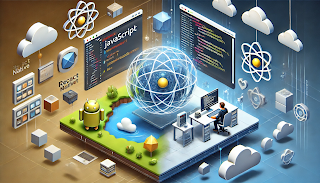Introduction:
Li-Fi, which stands for Light Fidelity, is a cutting-edge wireless
communication technology that uses light to transmit data. In
the dynamic arena of digital communication, Li-Fi stands out as a game-changing
technology, boasting speeds up to 100 times faster than conventional Wi-Fi.
Imagine a world where your lightbulb not only illuminates your room but also
connects you to the internet. In this blog, we’ll explore this fascinating
technology in simple terms.
What is Li-Fi?
Li-Fi (light fidelity) is a bidirectional wireless system that transmits
data via LED. Li-Fi is a
technology that uses light-emitting diodes to transmit the data wirelessly.
Li-Fi is a fast and cheap practical
version of Wi-Fi based on VLC (Visible Light Communication). VLC is a data communication medium, which uses
visible light between 400 THz and 800 THz as an optical carrier for data
transmission.
How Li-Fi work?
The operational procedure is very simple, if the LED is on, you transmit
a digital 1, if it’s off you transmit a 0. The LEDs can be switched on and off
very quickly, which gives nice opportunities for transmitting data. Hence all that is required is some LEDs and a
controller that codes data into those LEDs. Flicker depending upon the data we
want to encode. Thus every light
source will work as a hub for data transmission.
Advantages of Li-Fi:
- Large
bandwidth.
- High
efficiency.
- More
availability.
- Thousands and
millions of street lamps can be converted into Li-Fi spots.
- The issue of
the shortage of radio frequency bandwidth may be sorted out by Li-Fi.
- Green
information technology.
Applications of Li-Fi:
- Used for modern
medical instruments.
- In aircraft, it
can be used for data transmission.
- Underwater
communication.
- Li-Fi can be
used effectively in places where it is difficult to lay optical fiber
cable.
- In traffic
signals, Li-Fi can be used which will communicate with the LED lights of
the car, and several accidents can be decreased.
Challenges and Limitations:
- Li-Fi doesn’t
work in the dark.
- Li-Fi has a big
drawback compared to Wi-Fi, unlike Wi-Fi we cannot move to other rooms
unless there are wired bulbs too.
- Light can’t
pass through the objects.
- Interference
from external sources like sunlight, normal bulbs, and opaque materials in
the path of transmission will cause an interruption in communication.
- The high
installation cost of the VLC systems.
- A major
challenge facing Li-Fi is how the receiving device will transmit back to
the transmitter.
Future Prospects:
As researchers continue to explore and overcome Li-Fi limitations, its
potential applications are vast. From smart homes to smart cities, Li-fi could revolutionize
how we connect and communicate in the digital age.
Conclusion:
Li-Fi is more than just a bright idea it’s a transformative technology
with the potential to redefine our wireless communication landscape. As
researchers refine its capabilities and address challenges, we may soon find
ourselves living in a world where our lights not only brighten our spaces but
also illuminate a faster and more secure way to connect with the digital realm.
The future of Li-Fi looks dazzling, and we’re just beginning to witness its
glow.
Nandini Gondhali.





Nice content and very informative.
ReplyDeleteExcellent 👍
ReplyDelete